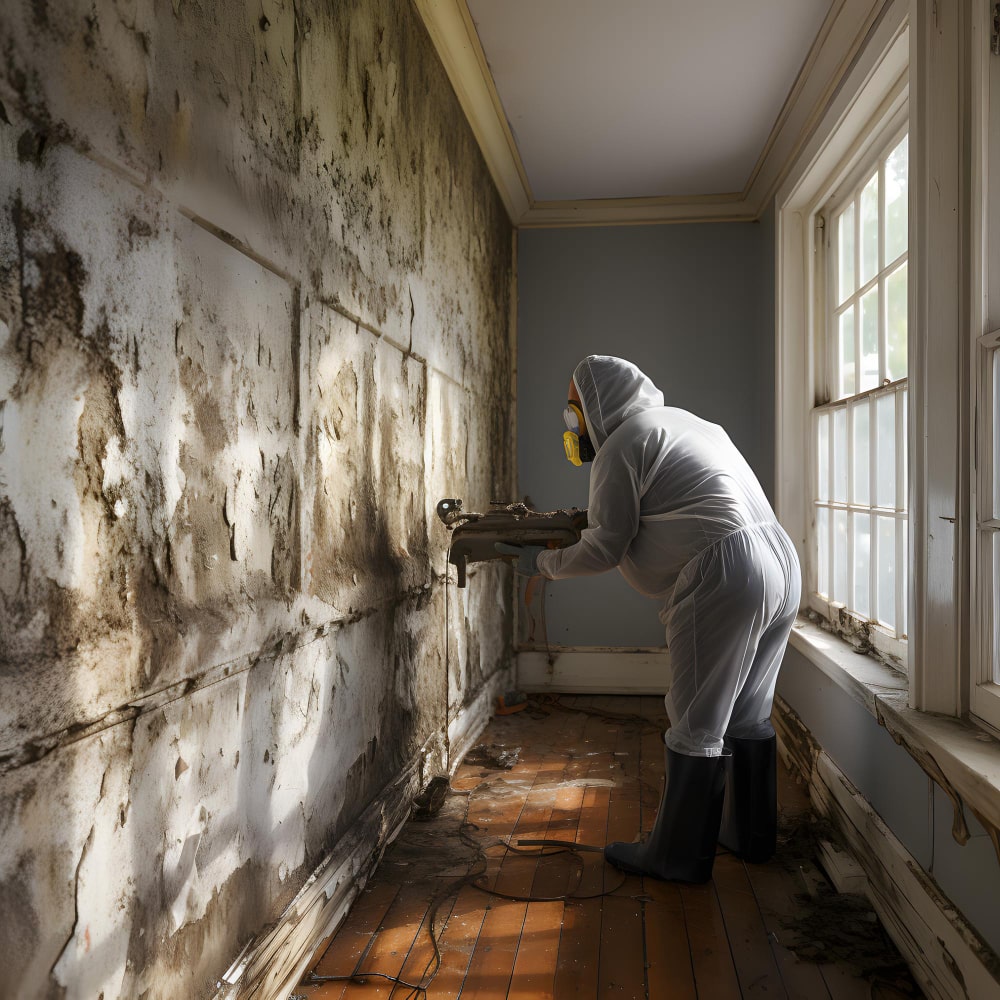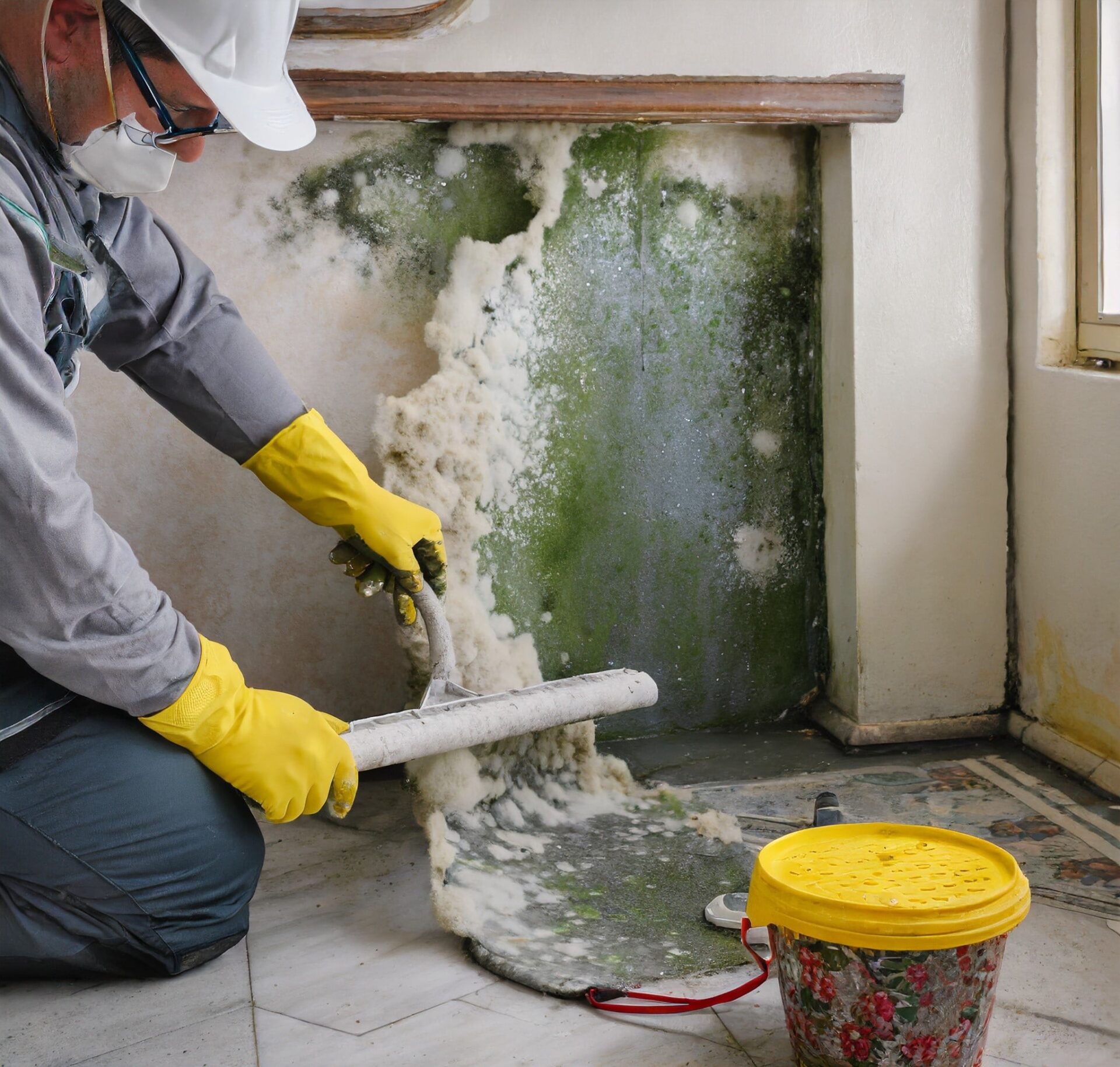As a vibrant city with a thriving property market, Melbourne faces a growing concern over the presence of mould in residential and commercial buildings. Mould, a type of fungus that can thrive in damp environments, can pose serious health risks and significantly impact the value of a property. That’s where professional mould inspection services in Melbourne come into play, providing critical insight and solutions to protect both occupants and property owners.
Recognizing the importance of proactive mould detection, this article explores the growing mould problem in Melbourne, the common types of mould found, and the associated health risks. Additionally, we’ll delve into the environmental factors that contribute to mould growth, and the crucial role of professional mould inspection in identifying and addressing these issues.
Key Takeaways
- Mould inspection and detection in Melbourne is crucial for safeguarding property values and occupant health.
- Mould can thrive in damp environments, posing serious health risks and compromising property condition.
- Professional mould inspection services in Melbourne utilize advanced detection methods to identify and address mould issues.
- Comprehensive mould inspection evaluates environmental factors, common mould types, and health risks to develop tailored solutions.
- Proactive mould prevention through ventilation improvements, moisture control, and regular maintenance is key to long-term property protection.

The Growing Concern of Mould Problems in Melbourne Properties
Mould has become an increasingly prevalent issue in Melbourne homes and businesses, posing significant health risks to residents and employees. The city’s temperate climate, coupled with its high humidity levels, creates an environment that is well-suited for mould growth, making mould inspection Melbourne and mould detection Melbourne crucial for maintaining a healthy living and working space.
Common Types of Mould Found in Melbourne Homes
Some of the most common types of mould found in Melbourne properties include:
- Aspergillus
- Cladosporium
- Penicillium
- Stachybotrys (also known as “black mould”)
Health Risks Associated with Mould Exposure
Exposure to mould can lead to a variety of health problems, including:
- Respiratory issues, such as asthma, bronchitis, and pneumonia
- Allergic reactions, including sneezing, nasal congestion, and skin irritation
- Neurological symptoms, such as headaches, dizziness, and memory problems
Environmental Factors Contributing to Mould Growth
Several environmental factors can contribute to the growth of mould in Melbourne properties, including:
- High humidity levels
- Leaks or water damage
- Poor ventilation
- Inadequate insulation
Addressing these environmental factors through mould inspection Melbourne and mould detection Melbourne is crucial for preventing and mitigating mould issues in the long run.
Professional Mould Inspection Melbourne: What to Expect
When it comes to addressing mould issues in Melbourne properties, a professional mould inspection is the first crucial step. Conducted by experienced mould detection experts, these comprehensive assessments delve deep into uncovering hidden mould growth and potential sources of moisture that can fuel its proliferation.
The mould inspection process typically begins with a thorough visual examination of the property. Inspectors carefully examine areas prone to moisture accumulation, such as bathrooms, kitchens, and basements, looking for any visible signs of mould. They also use specialized tools to detect hidden mould that may be lurking behind walls, under floors, or in other concealed spaces.
- Detailed visual inspection of the property
- Identification of moisture sources and potential problem areas
- Utilization of advanced detection equipment, including moisture meters and borescopes
- Collection of air and surface samples for laboratory analysis
- Comprehensive reporting on the scope and severity of the mould infestation
Once the initial assessment is complete, the mould detection experts will proceed to collect air and surface samples. These samples are then sent to a certified laboratory for detailed analysis, which helps to identify the specific types of mould present and determine the extent of the contamination.
The final step in the professional mould inspection process is the detailed reporting. The inspectors will provide a comprehensive report outlining their findings, including the types and concentrations of mould present, the likely causes of the mould growth, and recommendations for remediation and prevention measures.
| Service | Description | Outcome |
|---|---|---|
| Mould Inspection | Thorough assessment of property to identify visible and hidden mould growth | Detailed report on the scope and severity of mould contamination |
| Mould Testing | Collection of air and surface samples for laboratory analysis | Identification of specific mould types and concentrations |
| Remediation Recommendations | Proposed solutions to address the root causes of mould issues | Actionable steps to effectively eliminate mould and prevent future growth |
By partnering with professional mould inspectors in Melbourne, property owners can gain a comprehensive understanding of the mould problems in their homes or businesses and develop an informed plan to address them effectively.
Advanced Detection Methods and Technology
As mould issues continue to plague Melbourne properties, professionals in the field have developed innovative techniques to detect and assess mould infestations with unparalleled accuracy. From cutting-edge thermal imaging to comprehensive air quality testing, these advanced mould detection methods are revolutionizing the way homeowners and businesses address this growing concern.

Thermal Imaging for Moisture Detection
One of the leading advancements in mould inspection technology is the use of thermal imaging cameras. These specialized devices can identify hidden pockets of moisture, a crucial precursor to mould growth. By detecting temperature differences in a building’s structure, thermal imaging allows mould inspectors to pinpoint the exact locations of potential mould sources, enabling a more targeted and effective remediation process.
Air Quality Testing Procedures
Comprehensive air quality testing has become an essential component of mould detection Melbourne. Trained professionals use advanced equipment to collect air samples from various areas of a property, analyzing them for the presence of mould spores and other airborne contaminants. This detailed assessment provides a clear picture of the indoor air quality, allowing for the development of tailored solutions to address any mould-related concerns.
Surface Sampling Techniques
- Mould inspectors in Melbourne often employ surface sampling techniques to identify the specific types of mould present on a property.
- These methods involve collecting physical samples from suspected mould-affected areas, which are then sent to a laboratory for detailed analysis.
- By determining the exact mould species, professionals can devise the most appropriate remediation strategies, ensuring a comprehensive and effective solution.
The combination of these advanced detection methods, including thermal imaging, air quality testing, and surface sampling, provides Melbourne’s mould inspection experts with a comprehensive toolkit to address the growing mould concerns in the region. This holistic approach ensures that mould infestations are identified and addressed effectively, protecting the health and wellbeing of building occupants.
Prevention Strategies and Long-term Solutions
Preventing mould growth and maintaining a healthy living environment in Melbourne properties requires a multi-faceted approach. Experts recommend focusing on two key areas: ventilation improvements and effective moisture control methods.
Ventilation Improvements
Proper ventilation is crucial in inhibiting mould formation. Upgrading HVAC systems, installing exhaust fans in bathrooms and kitchens, and ensuring adequate air circulation can significantly minimize moisture buildup and reduce the risk of mould proliferation.
Moisture Control Methods
Addressing the root cause of moisture problems is essential for long-term mould prevention. This may involve fixing leaks, improving insulation, and implementing dehumidification systems to maintain optimal humidity levels in the home. Regular monitoring and addressing any emerging moisture issues can go a long way in keeping mould at bay.
Regular Maintenance Tips
Consistent, proactive maintenance is key to sustaining a mould-free environment. Homeowners should regularly inspect for signs of mould, clean and disinfect surfaces, and address any water damage or leaks promptly. By taking a preventative approach, Melbourne residents can safeguard their properties and ensure a healthy, mould-free living space.
Conclusion:
mould inspection in Melbourne is essential for protecting both property value and the health of occupants. With the city’s climate fostering ideal conditions for mould growth, addressing mould issues through professional inspection is a crucial first step. By utilizing advanced detection methods like thermal imaging, air quality testing, and surface sampling, experts can identify hidden mould and its sources, providing tailored remediation solutions. Prevention strategies, including improved ventilation and moisture control, along with regular maintenance, are key to safeguarding properties in the long term. Proactive mould management ensures a healthier environment and protects Melbourne’s property market from the damaging effects of mould infestations.
FAQ
What is the importance of professional mould inspection in Melbourne properties?
Professional mould inspection in Melbourne is crucial to identify and address hidden mould problems that can pose serious health risks and property damage. Mould experts use advanced detection methods to thoroughly assess properties and provide tailored solutions to prevent and mitigate mould growth.
What are the common types of mould found in Melbourne homes?
Some of the most prevalent mould types in Melbourne properties include Aspergillus, Penicillium, Cladosporium, and Stachybotrys (also known as “black mould”). These mould species can thrive in damp environments and cause various health issues, particularly for those with respiratory conditions or compromised immune systems.
What are the health risks associated with mould exposure in Melbourne?
Exposure to mould can lead to a range of health problems, including respiratory infections, allergic reactions, asthma exacerbations, and even neurological effects. Prolonged exposure to certain mould species, such as Stachybotrys, can be particularly hazardous and may cause more severe symptoms.
What environmental factors contribute to mould growth in Melbourne properties?
The humid and temperate climate of Melbourne, combined with the city’s frequent rainfall, create ideal conditions for mould proliferation. Factors like poor ventilation, water leaks, and high indoor humidity levels can further exacerbate mould growth in residential and commercial properties.
How do advanced detection methods and technology help identify mould in Melbourne properties?
Melbourne mould experts utilize cutting-edge technologies, such as thermal imaging cameras, to detect hidden moisture sources that can lead to mould growth. Air quality testing and surface sampling techniques provide accurate data on mould spore levels and species identification, enabling targeted remediation efforts.

